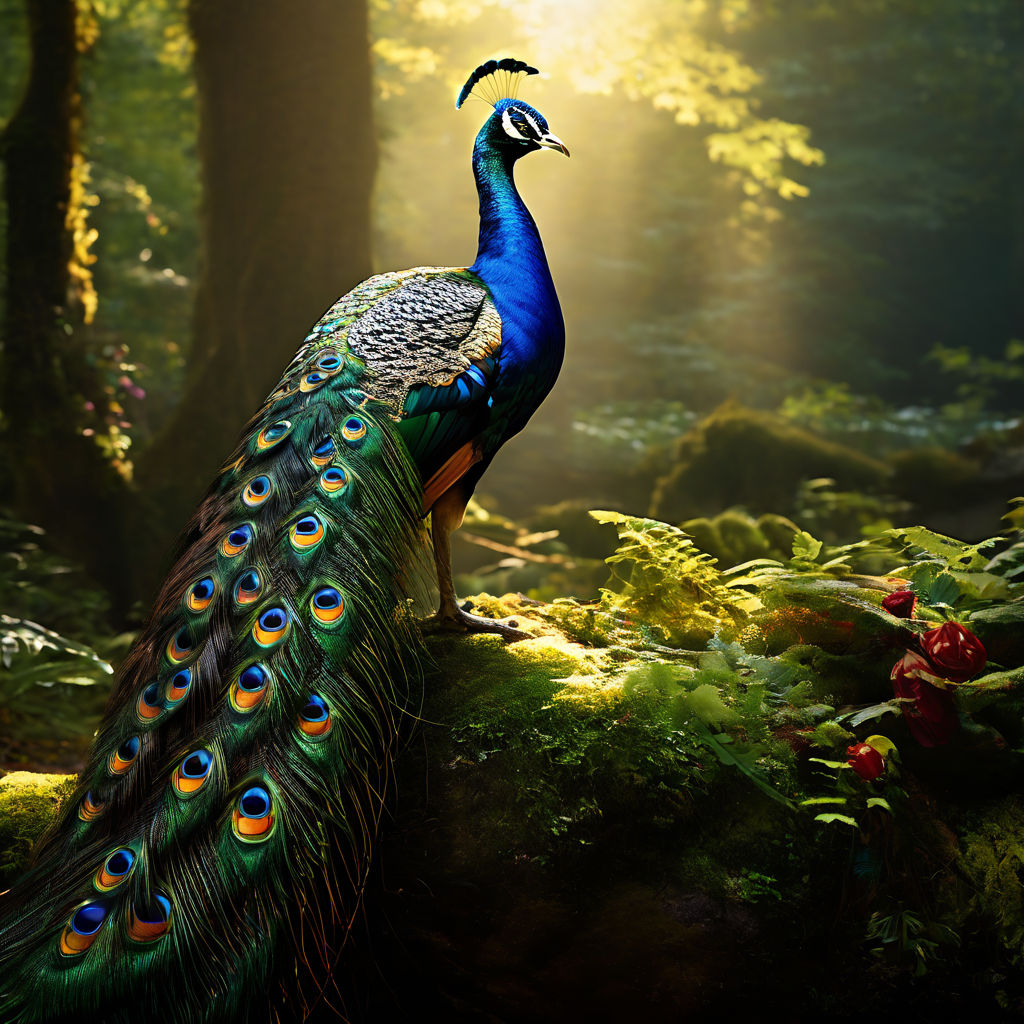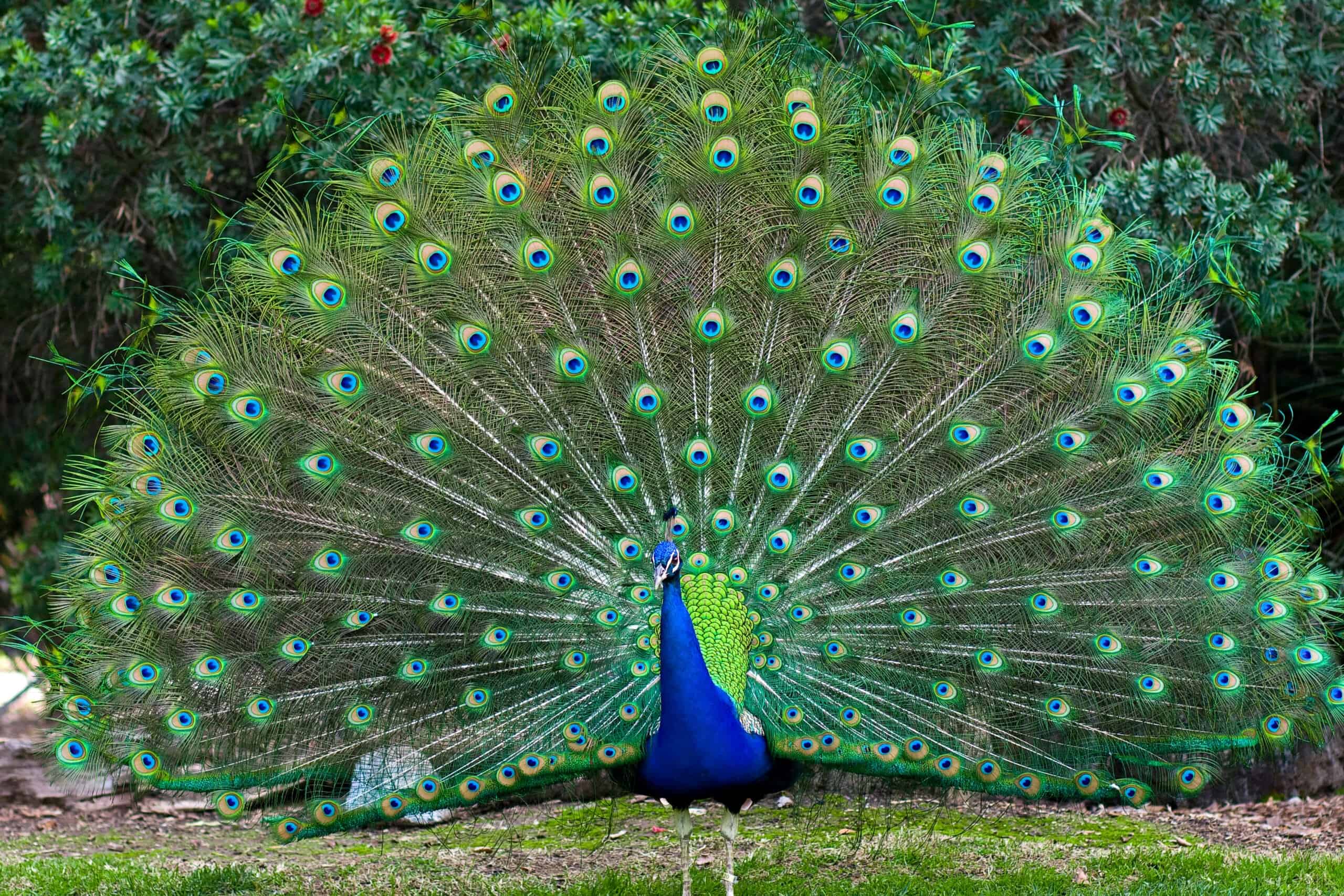
The peacock, with its resplendent plumage and majestic presence, stands as a symbol of nature’s beauty at its most vivid. Adorned with iridescent feathers in shades of blues, greens, and purples, the peacock’s display is a sight to behold, captivating all who encounter it. This magnificent bird is often found in habitats ranging from forests and woodlands to grasslands and meadows, where it roams freely, showcasing its elaborate plumage with graceful movements. The intricate patterns and striking colors of the peacock’s feathers serve multiple purposes, including attracting mates during the breeding season and deterring potential predators with its dazzling display. As the male peacock fans out its tail feathers in a breathtaking display known as a “train,” it creates a mesmerizing spectacle that highlights the inherent beauty of nature.
Beyond its physical appearance, the peacock’s behavior adds to its allure. During courtship rituals, male peacocks engage in elaborate displays to woo females, showcasing their vibrant plumage while emitting loud calls and strutting with confidence. These displays serve as a testament to the peacock’s resilience and adaptability in its natural environment. Additionally, the peacock’s distinctive vocalizations, which range from loud calls to softer, melodic sounds, contribute to the rich tapestry of sounds found in nature.

In many cultures around the world, the peacock holds significant symbolism and cultural importance. Revered for its beauty and elegance, the peacock is often depicted in art, literature, and mythology as a symbol of immortality, renewal, and protection. In Hinduism, the peacock is associated with various deities and is considered a sacred bird, representing integrity, grace, and purity. Similarly, in Greek mythology, the peacock is linked to the goddess Hera, who adorned her chariot with its feathers as a symbol of her power and authority.
Despite its cultural significance and widespread admiration, the peacock also faces threats to its survival, including habitat loss, poaching, and illegal wildlife trade. Conservation efforts aimed at protecting peacock populations and their habitats are crucial for ensuring the continued existence of these magnificent birds. Through education, research, and habitat conservation initiatives, organizations and individuals work together to safeguard the peacock and other endangered species, preserving nature’s beauty for future generations to enjoy.

In conclusion, the peacock’s majestic splendor serves as a testament to the remarkable diversity and beauty found in the natural world. With its vibrant plumage, graceful movements, and symbolic significance, the peacock captivates and inspires awe in all who encounter it. By appreciating and protecting the peacock and its habitat, we honor nature’s beauty and contribute to the conservation of one of the world’s most magnificent creatures.
